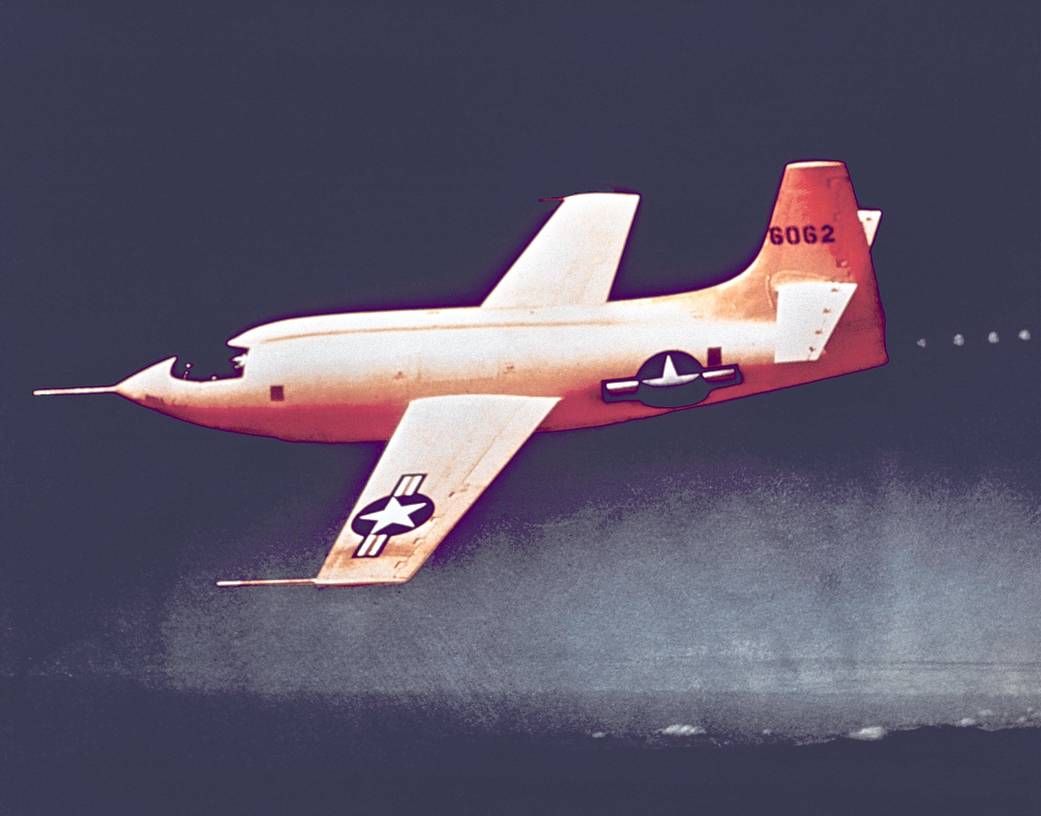
The first generation X-1 aircraft changed aviation history in numerous ways, and not simply because they were the first aircraft to fly faster than the speed of sound. Rather, they established the concept of the research aircraft, built solely for experimental purposes, and unhampered by any military or commercial requirements. Although subsequent X-planes were built for a wide range of purposes – technology or concept demonstrators, unmanned test missiles, and even as prototypes in all but name – the X-1s were built to go faster than an aircraft had ever flown before.
The X-1 resulted from technological challenges facing aircraft designers in the late 1930s and early 1940s. Aircraft had begun to experience both subsonic and supersonic airflow over their wings. This created a range of undesirable characteristics – compressibility, increased drag, trim changes, severe turbulence, and loss of control effectiveness. Wind tunnels were affected by the same aerodynamic problems, and their data proved to be unreliable in this regime. As a result, a few individuals – John Stack of the NACA, Ezra Kotchner of the Army Air Forces, and Walter Diehl of the Navy – realized a specialized research aircraft offered the only feasible means of getting supersonic aeronautical data.
The Army Air Forces selected Bell Aircraft to build three X-1 aircraft. The fuselage was the same shape as a 0.50 caliber machine gun bullet, which was known to be stable at supersonic speeds. The X-1 wings were straight, rather than swept back, and relatively thin for the time. The X-1-1 (serial number 46-062) had a wing with an 8 percent thickness/chord ratio. The X-1-2 (serial number 46-063) had a 10 percent ratio wing. The X-1 was powered by an XLR-11 rocket engine, which had four chambers and burned liquid oxygen (LOX) and a mixture of alcohol and water. In 1945, rockets were viewed with suspicion by some engineers. Both the NACA and Navy preferred a jet-powered research aircraft, rather than one using a rocket, as the Army Air Forces had selected...Learn more
This particular craft was nicknamed “Glamorous Glennis” by Chuck Yeager in honor of his wife, and is now on permanent display in the Smithsonian National Air and Space Museum in Washington, DC.

























